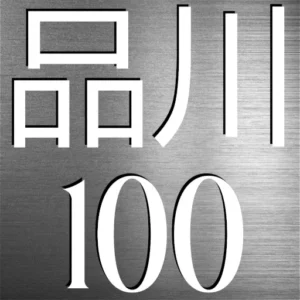Tokai Seven Lucky Gods Tour – Walk Your Way to Good Fortune
The Tokai Seven Lucky Gods Tour (東海七福神めぐり) is a walking pilgrimage across Shinagawa that blends spiritual tradition with exploration. By visiting seven sites—four shrines and three temples—you can receive blessings from Japan’s seven deities of good fortune, known as the Shichifukujin.
Starting in Kitashinagawa and ending near Ōmori, the route runs for about 4.5 kilometers along the old Tōkaidō road. You can complete it in either direction. Many locals walk the full course during the New Year period to attract good luck, prosperity, and happiness for the year ahead.
⛩️ The Seven Lucky Gods and Their Stops
- Shinagawa Shrine (品川神社) – Daikokuten: God of wealth and prosperity
- Yōgen-ji Temple (養願寺) – Hotei: God of abundance and good health
- Isshin-ji Temple (一心寺) – Jurōjin: God of longevity
- Ebara Shrine (荏原神社) – Ebisu: God of fishermen and good fortune
- Hōsen-ji Temple (法禅寺) – Bishamonten: God of war and guardian against evil
- Tensō Suwa Shrine (天祖諏訪神社) – Fukurokuju: God of happiness and long life
- Iwai Shrine (伊和神社) – Benzaiten: Goddess of art, knowledge, and beauty
Most people visit these spots between January 1st and 15th, but the route is open year-round. Some locations offer special paper scrolls or boards for collecting red goshuin (御朱印) stamps or stickers from each site.
🧧 What Do You Do at Each Site?
When you arrive at each temple or shrine, look for a stamp booth or office (授与所). Politely ask to receive the Seven Lucky Gods stamp for that location.
You can say:
七福神の御朱印をお願いします。
Shichifukujin no goshuin o onegaishimasu.
This means: “May I please have the Seven Lucky Gods stamp?” There’s often a small fee (usually ¥300–500 per stamp), and staff may ask if you want it on a dedicated board or in your goshuin book.
Take your time to pray or bow at each spot, and enjoy the hidden charm of these smaller temples and shrines scattered through local neighborhoods.
📍 Visitor Information
Start point (typical): Shinagawa Shrine
Route length: Approx. 4.5 km
Best time to visit: January 1–15 (New Year’s season)
Admission: Free, small fee for stamps (¥300–¥500 each)
Map of the Route
The where is it section below shows the location of Shinagawa-Jinja and the One Hundred Spots sign. Here is a map showing a possible route from A to G, or G to A.
Where is it?
| what3words | ///shopping.downward.petted |
| latitude longitude | 35.6179177, 139.7379243 |
| Nearest station(s) | Shinbanba Station (Keikyū Main Line) Kitashinagawa Station (Keikyū Line) |
| Nearest public conveniences | On shrine grounds and at Shinbanba Station |
Show me a sign.

This sign close to the other 9,10,11 sign at the foot of the long stairs.
Withervee says…
This isn’t just a walk—it’s an urban treasure hunt blessed by the gods. If you enjoy quiet streets, pocket shrines, and a bit of spiritual sticker collecting, you’ll love it.
I’ve not intentionally visited these places to gain good luck. Nevertheless, I’ve visited them. Perhaps that’s enough to get the luck. Or perhaps it doesn’t work unless I pay money for a stamp.
You can do pilgrimage at any time of year. However, many do it during the first week of January. This period aligns with the Japanese New Year, when many locals participate in the pilgrimage to boost their luck for the upcoming year. It’s a tradition to visit the temples during this time when the monks use their finest writing to create seals that are a little more original than usual. In summary, while you can do the pilgrimage at any time, it’s thought that it’s extra good luck do it at the start of the New Year.
Site Character
- Lifestyle 生活 (Seikatsu): ✔️
- Historical Significance 歴史 (Rekishi): ✔️
- Atmosphere/Natural Features 風土 (Fūdo): ✔️
Who in their right mind would vote for this?
- Local (Shinto) believers
- Preservation society members
- Fans of ritual dance
- Slow ritual enthusiasts
- Cultural heritage buffs
While you’re there…
Stop in for wagashi near Yōgen-ji, rest at Shinagawa Shrine’s spring, and look for old milestones and waymarkers along the Tōkaidō. It’s a spiritual stroll with layers.

